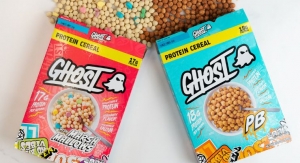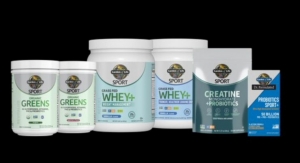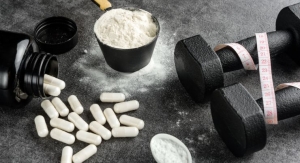Janica Lane, Partner, Partnership Capital Growth Advisors05.01.12
Sports nutrition is a very dynamic category within the dietary supplement industry, characterized by several striking contradictions and juxtapositions—in products and ingredients, in consumers, in channels and in participating companies. What holds true across the category, however, is market-leading growth driven by increasing availability of a wider variety of high-quality products that cater up and down the consumer spectrum, from armchair athletes to serious professionals.
Market Definition, Size & Trends
Nutrition Business Journal (NBJ) separates sports nutrition into three distinct categories: Sports Nutrition Supplements, including powders, pills and “hardcore” bodybuilding ready-to-drink (RTD) products; Nutrition Bars & Gels; and Sports & Energy Drinks & Shots.
After slower growth in 2009, the sports nutrition industry grew nearly 9% in 2010, reaching almost $19 billion in retail sales. Performance was even stronger in 2011: Retail sales rose 14%, to $21.4 billion, far outpacing overall supplement industry growth of 6.5%. The sector has enjoyed a compound annual growth rate (CAGR) of over 10% during the last decade, in line with healthy food and more than double the 5% rate of dietary supplements as a whole.
All three categories exhibited strong performance last year: Sports Nutrition Supplements: 2011 retail sales reached $3.6 billion, up 10%; Nutrition Bars/Gels: $2.8 billion, up 13%; Sports & Energy Drinks & Shots: $15 billion, up 15%
Performance by channel, however, was more of a mixed bag. Three channels accounted for nearly all of the growth in the category: Mass Market Retail: The largest market was also the fastest growing, with 2011 retail sales up 15%, to $16 billion; and Natural/Specialty Retail: Second in size to Mass Market, this channel grew about 10%, reaching $3 billion. Internet: No longer a fledgling category, Internet retail grew 22%, to $710 million.
Growth in other channels for sports nutrition, including the practitioner channel and the multi-level marketing and direct response (mail, TV, etc.) was also attractive, at 5% to 9% each. The more rapid growth particularly in mass and online suggest a broadening appeal of sports nutrition products to “active lifestyle” users in addition to the historical “athlete” base.
This impressive performance attracted additional attention to the industry, as 2011 was a year of robust transaction activity (See Figure 1).

So, what do all these statistics tell us about the sports nutrition industry as a whole? With several product categories and many channels, is it possible to identify any unifying trends across the sports nutrition industry? The answer is absolutely.
The Sports Nutrition Consumer
Some diverging trends have emerged across the sports nutrition consumer population. First, hardcore athletes remain a critical population for brand traction and validation. The sports nutrition industry started with this group and it remains at the epicenter. Endurance athletes and bodybuilders, each with their own diverging set of product demands and performance enhancement needs, are sports nutrition’s early adopters and are often those who can best evaluate a product’s efficacy and attributes and become influential brand advocates.
While performance athletes play a key role in sports nutrition, they are believed to account for only about 5% of total industry sales, according to NBJ, and hence a brand’s growth can’t rely on this population alone.
Enter the mainstream consumer. If performance athletes are at the bull’s-eye of the sports nutrition industry, the everyday consumer is the thick outer ring, while the sports hobbyist audience is somewhere in between. With these populations, sports nutrition products can play a very different role, focused less on performance and more on everyday health and active lifestyle.
The everyday consumer, called a “lifestyle user” by Datamonitor, is not necessarily interested in sports at all yet desires an elevated level of nutrition for general health and wellness reasons. The recreational/sports hobbyist user overlaps with both these groups, using sports nutrition products for both lifestyle reasons and to support aspirational athletic endeavors. For both populations, reasons for product usage include enhancing physical and mental performance, increasing energy levels, boosting protein consumption and staying in shape, to name a few.
Given the magnitude of the opportunity this customer set presents to the sports nutrition industry, it cannot be ignored, though a name change for the category might be in order.
Channel Implications
Performance athletes have historically been best reached through the specialty channel (e.g., GNC, Vitamin Shoppe, or favorite local stores), which, together with natural, accounted for about 50% of 2011 retail sales of Sports Nutrition Supplements, but only about 14.5% of sales if Nutrition Bars/Gels and Sports & Energy Drinks & Shots are included. Evidencing these trends, GNC’s revenues grew almost 14%, to a little more than $2 billion, while its sports nutrition revenues grew 18% to $917 million (Retailsails.com).
In thinking about the mainstreaming of sports nutrition products, there is a chicken and egg dilemma to consider: What came first—the casual user’s consumption of sports nutrition products or greater product availability across a variety of channels? It is probably a combination.
What’s certain today is that sports nutrition products have a significantly broader channel presence than in the past, with mass market retail leading the charge. MusclePharm Corporation, for example, announced in February 2012 that the company, in partnership with MMA Elite, would launch sports nutrition supplements under the MMA Elite brand in Walmart. The launch will start with pre-workout and post-workout products called Perform Elite and Recover Elite, which will retail for $19.95, just under Walmart’s important $20 threshold. The products are similar in profile to MusclePharm’s Assault and Recon products, which are sold through specialty channels. It is believed the brand will resonate with Walmart consumers, as MMA Elite is already present in Walmart stores via an apparel line (New York Times).
The mass market poses both a major opportunity for growth, and a risk—of channel conflict, of alienation of core users, of price pressure, etc. Companies like CytoSport, and hopefully MusclePharm, have successfully navigated these waters by customizing products for certain channels and utilizing different brand names, while others have chosen to remain in the specialty realm alone, finding abundant growth prospects there without risking “selling out” to the mass market.
Most sports nutrition brands and their consumers have not considered Internet presence to be “selling out”—most companies offer products for sale through their own websites as well as through prominent online retailers like bodybuilding.com, drugstore.com, and brick-and-mortar sports nutrition retailers’ websites. Given the ubiquity of the Internet, convenience of purchase and delivery, and abundant informational resources available online—from product reviews to real-time customer service—sports nutrition products are a good fit with e-commerce. GNC’s online sales grew 62% in 2011, to $95 million. Bodybuilding.com’s revenues grew from $47 million in 2005 to nearly $196 million in 2010 (33% CAGR).
Products, Ingredients & Delivery Systems
Just as there is a direct linkage between changes in the sports nutrition consumer base and channel diversification, delivery systems have evolved toward convenience to cater to the mainstream consumer. While hardcore athletes are willing to lug 5-gallon containers of powdered product and mix their own concoctions, casual users are attracted to ease of use. This has prompted product concentration and miniaturization, more products in RTD formats, and innovative delivery systems like chews, puddings, shots, blocks….and of course bars, bars and more bars! However, and perhaps surprisingly, sports nutrition powders still dominate, exceeding $3 billion in retail sales (86% of the Sports Nutrition Supplements category) and growing 10% annually, according to NBJ.
When it comes to products and ingredients with high science, the professional athlete is the early adopter and most likely to seek out cutting-edge products. That said, the lifestyle consumer has also shown interest in truly science-backed products that are safe and not too “edgy.”
With the backing of strong science and human clinical trials demonstrating the safety and efficacy of new products, there is an opportunity for sports nutrition companies to bring novel products to market that break through barriers in human nutrition and performance without (hopefully) compromising safety. Interestingly, many of these new science-backed products first come to market as pills or tablets—which have some benefits as a delivery format, including timed release and stability—despite sports nutrition pills being a market of only about $225 million.
Contrasting with this desire for high science, many sports nutrition consumers are simultaneously going back to basics, looking for organic/natural labels and sticking with tried-and-true ingredients like basic proteins, honey and even milk. For some, what’s not in the ingredient or product is as important as what’s in it—products free of allergens, sugar, gluten, chemicals and other “evils” have experienced strong growth.
On the subject of proteins, they have remained the golden child of the sports nutrition industry. There has been little debate about their benefit, nor have they been vilified in the same way carbohydrates have. Greater awareness of the nutritional value of increased protein intake and resulting demand for products to fulfill that need initially drove many mainstream consumers to the sports nutrition category.
Whey protein has remained the dominant choice for the sports nutrition consumer, and more advanced concentrates, hydrolysates and isolates have grown over 10% annually in recent years. But given whey protein’s supply-demand constraints—and increasing prices as a result—as well as greater awareness of the health benefits of plant-based diets, vegetable-based protein sources like hemp, peas, soy and rice have also grown in popularity and will continue above-market growth. Combining vegetarian protein types in a single product can enhance amino acid profiles and provide a nutritional combination rivaling whey.
Industry Challenges & Regulatory Response
The sports nutrition industry has had its share of challenges, most of which have centered on pushing the envelope with ingredients and products aimed at bodybuilders.
Recent industry issues have centered on two closely intertwined issues: (1) the discovery of adulterated sports nutrition products containing contaminants like anabolic steroids and banned stimulants, and (2) the dangers of “natural synthetics.” Both are especially problematic in that potentially dangerous and/or contaminated products are making it to the real and virtual “shelves” of prominent retailers in the industry.
With regard to the first issue, products containing banned or controlled substances continue to find a path to market, and a few bad eggs continue to tarnish the industry’s reputation. Anabolic steroids are perhaps the most notorious. Once a non-controlled substance, they were banned by the FDA following the 1988 Olympics, when the Anabolic Steroid Control Act was enacted (2004). The act prohibits possession of anabolic steroids without a prescription and also restricts distribution and production. Additional chemicals called prohormones were classified as controlled substances in January 2005. In July 2009, FDA issued a public health advisory urging consumers to cease the use of bodybuilding products with steroids or steroid analogs. While these measures can help, banned substances—mainly stimulants, pro-hormones and anabolic agents—can still be found on the market.
Similarly, natural synthetics are a hot button subject in the industry. Recent controversy has surrounded DMAA (dimethylamylamine), a pre-workout ingredient known for its stimulant effect. Pre-workout products with DMAA gained notoriety when the World Anti-Doping Agency (WADA) banned them in 2010, linking them to ephedrine and amphetamine. Several adverse events were reported before and after the ban, most recently with Jack3d, a DMAA-based supplement from USPlabs, which may be linked to the death of two U.S. soldiers.
DMAA has been called a derivative of the geranium plant, but the links are nebulous; naysayers point to the inability to extract DMAA from geraniums and supply/demand dynamics that should make “real” geranium-based sports nutrition products 10x more expensive than those on the market today. As the controversy evolves, more industry experts believe the DMAA used in preworkout supplements is a “synthetic natural” or “synthetic botanical,” which was a gray area up until the FDA’s recent release of New Dietary Ingredient (NDI) guidelines.
Summing up these issues, Michael Levy, director of New Drugs and Labeling Compliance, said the following in a 2009 testimonial to the Senate Committee on the Judiciary Subcommittee on Crime and Drugs: “There is no requirement for the manufacturer of a dietary supplement to provide FDA with evidence of the product’s effectiveness, and the manufacturer also need not provide FDA with evidence of product safety prior to marketing, unless the product contains a “new dietary ingredient” that has not been part of the food supply.”
The good news is FDA and other organizations like WADA have taken more aggressive steps to address both unsafe/banned substances and potentially dangerous natural synthetics. To address the unknown of synthetic naturals, FDA has called out “natural identicals” as one of four top priorities in its NDI guidelines. In fact, the agency has made it clear that synthesized botanicals will likely be subject to NDI filings. This should increase awareness of these products and their safety and efficacy before they hit the market rather than putting the FDA in a defensive position as it has been with DMAA.
Outside of regulatory agencies, supplement companies themselves have also gotten into the act. Most sports nutrition industry manufacturers and marketers adhere to high standards of product quality and integrity.
In a recent report on sports nutrition, Euromonitor commends companies for doing things by the book and for their investment in certification. A great real-time example is companies’ adoption of NSF International's Certified for Sport program. The program was developed to protect against product adulteration, assure product contents match with label claims, and identify banned substances in products and/or ingredients. Sports nutrition businesses that carry the NSF mark on their label have met its stringent independent certification process guidelines. The label itself is intended to be a seal of approval, which gives comfort to athletes, coaches and everyday consumers that a sports supplement product is safe. (More details on the program can be found in the side bar below.)
In late January 2012, NSF rolled out a smartphone app enabling consumers to search and find supplements carrying the NSF Certified for Sport designation. This is just the tip of the iceberg and exemplary of the industry’s potential to prompt meaningful change.
What the Future May Hold
In such a large and diverse market, it’s difficult to predict the future, but there are a few potential areas of opportunity.
The sports nutrition consumer: Segmentation of consumers by demographics rather than activity level in the creation and marketing of products. As an example, sports nutrition companies are in the early stages of segmenting products by gender to better reach the mainstream female consumer. To date, the vast majority of products have targeted men, in both packaging and formulation. Given that more females work out than males in the U.S., and they perform about 80% of households’ shopping, products that are truly targeted to them rather than simply repackaged represents a large market opportunity. Newer areas like Baby Boomers and teenage consumers also present unique opportunities—as do combinations of the above (e.g., younger women or older women).
Channels: Greater ubiquity of products across channels, with companies managing channel conflict through differentiated products, brands and packaging. Receptivity of products in alternative channels: c-stores; outdoor stores; coffee houses, smoothie bars, or other foodservice outlets; even beauty retailers and department stores are getting in on the act.
Products and ingredients: Introduction of cost-effective, safe, efficacious and sustainable natural synthetics that pass NDI guidelines are cutting-edge. Protein fortification of everyday foods, from waffles to Wontons, from an ever-wider variety of sources (algae anyone?) represents another big opportunity. There’s also an emergence of whole food supplements in sports nutrition, with companies like BioSan Laboratories (Mega Food) moving into the category. Similar to trends in natural beauty care, products that are natural, organic and/or vegan and contain high science and proven efficacy will be successful. Product growth rates are likely to continue to be robust: Sports Nutrition Supplements—Powder growth 11% and 8% growth this year and next, creating a $3.75 billion market by 2013. Pill-form supplements are expected to grow 8% in 2012 and 2013 to reach $225 million. Other categories are expected to grow similarly; Nutrition Bars/Gels—10% growth in each of 2012-2013, reaching $3.25 billion in 2013; and Sports & Energy Drinks & Shots—Energy Shots should move past the $2 billion mark by 2013, with growth of 20% annually. If the overall category continues to increase at such rates, it should be valued at approximately $20 billion at retail in 2013.
About the author: Janica Lane is a partner at San Francisco, CA-based Partnership Capital Growth Advisors, where she is primarily responsible for leading transaction processes and sourcing opportunities with new partner companies. Her work has spanned a range of industries. She joined PCGA in 2006. She can be reached at info@pcg-advisors.com.
Market Definition, Size & Trends
Nutrition Business Journal (NBJ) separates sports nutrition into three distinct categories: Sports Nutrition Supplements, including powders, pills and “hardcore” bodybuilding ready-to-drink (RTD) products; Nutrition Bars & Gels; and Sports & Energy Drinks & Shots.
After slower growth in 2009, the sports nutrition industry grew nearly 9% in 2010, reaching almost $19 billion in retail sales. Performance was even stronger in 2011: Retail sales rose 14%, to $21.4 billion, far outpacing overall supplement industry growth of 6.5%. The sector has enjoyed a compound annual growth rate (CAGR) of over 10% during the last decade, in line with healthy food and more than double the 5% rate of dietary supplements as a whole.
All three categories exhibited strong performance last year: Sports Nutrition Supplements: 2011 retail sales reached $3.6 billion, up 10%; Nutrition Bars/Gels: $2.8 billion, up 13%; Sports & Energy Drinks & Shots: $15 billion, up 15%
Performance by channel, however, was more of a mixed bag. Three channels accounted for nearly all of the growth in the category: Mass Market Retail: The largest market was also the fastest growing, with 2011 retail sales up 15%, to $16 billion; and Natural/Specialty Retail: Second in size to Mass Market, this channel grew about 10%, reaching $3 billion. Internet: No longer a fledgling category, Internet retail grew 22%, to $710 million.
Growth in other channels for sports nutrition, including the practitioner channel and the multi-level marketing and direct response (mail, TV, etc.) was also attractive, at 5% to 9% each. The more rapid growth particularly in mass and online suggest a broadening appeal of sports nutrition products to “active lifestyle” users in addition to the historical “athlete” base.
This impressive performance attracted additional attention to the industry, as 2011 was a year of robust transaction activity (See Figure 1).
So, what do all these statistics tell us about the sports nutrition industry as a whole? With several product categories and many channels, is it possible to identify any unifying trends across the sports nutrition industry? The answer is absolutely.
The Sports Nutrition Consumer
Some diverging trends have emerged across the sports nutrition consumer population. First, hardcore athletes remain a critical population for brand traction and validation. The sports nutrition industry started with this group and it remains at the epicenter. Endurance athletes and bodybuilders, each with their own diverging set of product demands and performance enhancement needs, are sports nutrition’s early adopters and are often those who can best evaluate a product’s efficacy and attributes and become influential brand advocates.
While performance athletes play a key role in sports nutrition, they are believed to account for only about 5% of total industry sales, according to NBJ, and hence a brand’s growth can’t rely on this population alone.
Enter the mainstream consumer. If performance athletes are at the bull’s-eye of the sports nutrition industry, the everyday consumer is the thick outer ring, while the sports hobbyist audience is somewhere in between. With these populations, sports nutrition products can play a very different role, focused less on performance and more on everyday health and active lifestyle.
The everyday consumer, called a “lifestyle user” by Datamonitor, is not necessarily interested in sports at all yet desires an elevated level of nutrition for general health and wellness reasons. The recreational/sports hobbyist user overlaps with both these groups, using sports nutrition products for both lifestyle reasons and to support aspirational athletic endeavors. For both populations, reasons for product usage include enhancing physical and mental performance, increasing energy levels, boosting protein consumption and staying in shape, to name a few.
Given the magnitude of the opportunity this customer set presents to the sports nutrition industry, it cannot be ignored, though a name change for the category might be in order.
Channel Implications
Performance athletes have historically been best reached through the specialty channel (e.g., GNC, Vitamin Shoppe, or favorite local stores), which, together with natural, accounted for about 50% of 2011 retail sales of Sports Nutrition Supplements, but only about 14.5% of sales if Nutrition Bars/Gels and Sports & Energy Drinks & Shots are included. Evidencing these trends, GNC’s revenues grew almost 14%, to a little more than $2 billion, while its sports nutrition revenues grew 18% to $917 million (Retailsails.com).
In thinking about the mainstreaming of sports nutrition products, there is a chicken and egg dilemma to consider: What came first—the casual user’s consumption of sports nutrition products or greater product availability across a variety of channels? It is probably a combination.
What’s certain today is that sports nutrition products have a significantly broader channel presence than in the past, with mass market retail leading the charge. MusclePharm Corporation, for example, announced in February 2012 that the company, in partnership with MMA Elite, would launch sports nutrition supplements under the MMA Elite brand in Walmart. The launch will start with pre-workout and post-workout products called Perform Elite and Recover Elite, which will retail for $19.95, just under Walmart’s important $20 threshold. The products are similar in profile to MusclePharm’s Assault and Recon products, which are sold through specialty channels. It is believed the brand will resonate with Walmart consumers, as MMA Elite is already present in Walmart stores via an apparel line (New York Times).
The mass market poses both a major opportunity for growth, and a risk—of channel conflict, of alienation of core users, of price pressure, etc. Companies like CytoSport, and hopefully MusclePharm, have successfully navigated these waters by customizing products for certain channels and utilizing different brand names, while others have chosen to remain in the specialty realm alone, finding abundant growth prospects there without risking “selling out” to the mass market.
Most sports nutrition brands and their consumers have not considered Internet presence to be “selling out”—most companies offer products for sale through their own websites as well as through prominent online retailers like bodybuilding.com, drugstore.com, and brick-and-mortar sports nutrition retailers’ websites. Given the ubiquity of the Internet, convenience of purchase and delivery, and abundant informational resources available online—from product reviews to real-time customer service—sports nutrition products are a good fit with e-commerce. GNC’s online sales grew 62% in 2011, to $95 million. Bodybuilding.com’s revenues grew from $47 million in 2005 to nearly $196 million in 2010 (33% CAGR).
Products, Ingredients & Delivery Systems
Just as there is a direct linkage between changes in the sports nutrition consumer base and channel diversification, delivery systems have evolved toward convenience to cater to the mainstream consumer. While hardcore athletes are willing to lug 5-gallon containers of powdered product and mix their own concoctions, casual users are attracted to ease of use. This has prompted product concentration and miniaturization, more products in RTD formats, and innovative delivery systems like chews, puddings, shots, blocks….and of course bars, bars and more bars! However, and perhaps surprisingly, sports nutrition powders still dominate, exceeding $3 billion in retail sales (86% of the Sports Nutrition Supplements category) and growing 10% annually, according to NBJ.
When it comes to products and ingredients with high science, the professional athlete is the early adopter and most likely to seek out cutting-edge products. That said, the lifestyle consumer has also shown interest in truly science-backed products that are safe and not too “edgy.”
With the backing of strong science and human clinical trials demonstrating the safety and efficacy of new products, there is an opportunity for sports nutrition companies to bring novel products to market that break through barriers in human nutrition and performance without (hopefully) compromising safety. Interestingly, many of these new science-backed products first come to market as pills or tablets—which have some benefits as a delivery format, including timed release and stability—despite sports nutrition pills being a market of only about $225 million.
Contrasting with this desire for high science, many sports nutrition consumers are simultaneously going back to basics, looking for organic/natural labels and sticking with tried-and-true ingredients like basic proteins, honey and even milk. For some, what’s not in the ingredient or product is as important as what’s in it—products free of allergens, sugar, gluten, chemicals and other “evils” have experienced strong growth.
On the subject of proteins, they have remained the golden child of the sports nutrition industry. There has been little debate about their benefit, nor have they been vilified in the same way carbohydrates have. Greater awareness of the nutritional value of increased protein intake and resulting demand for products to fulfill that need initially drove many mainstream consumers to the sports nutrition category.
Whey protein has remained the dominant choice for the sports nutrition consumer, and more advanced concentrates, hydrolysates and isolates have grown over 10% annually in recent years. But given whey protein’s supply-demand constraints—and increasing prices as a result—as well as greater awareness of the health benefits of plant-based diets, vegetable-based protein sources like hemp, peas, soy and rice have also grown in popularity and will continue above-market growth. Combining vegetarian protein types in a single product can enhance amino acid profiles and provide a nutritional combination rivaling whey.
Industry Challenges & Regulatory Response
The sports nutrition industry has had its share of challenges, most of which have centered on pushing the envelope with ingredients and products aimed at bodybuilders.
Recent industry issues have centered on two closely intertwined issues: (1) the discovery of adulterated sports nutrition products containing contaminants like anabolic steroids and banned stimulants, and (2) the dangers of “natural synthetics.” Both are especially problematic in that potentially dangerous and/or contaminated products are making it to the real and virtual “shelves” of prominent retailers in the industry.
With regard to the first issue, products containing banned or controlled substances continue to find a path to market, and a few bad eggs continue to tarnish the industry’s reputation. Anabolic steroids are perhaps the most notorious. Once a non-controlled substance, they were banned by the FDA following the 1988 Olympics, when the Anabolic Steroid Control Act was enacted (2004). The act prohibits possession of anabolic steroids without a prescription and also restricts distribution and production. Additional chemicals called prohormones were classified as controlled substances in January 2005. In July 2009, FDA issued a public health advisory urging consumers to cease the use of bodybuilding products with steroids or steroid analogs. While these measures can help, banned substances—mainly stimulants, pro-hormones and anabolic agents—can still be found on the market.
Similarly, natural synthetics are a hot button subject in the industry. Recent controversy has surrounded DMAA (dimethylamylamine), a pre-workout ingredient known for its stimulant effect. Pre-workout products with DMAA gained notoriety when the World Anti-Doping Agency (WADA) banned them in 2010, linking them to ephedrine and amphetamine. Several adverse events were reported before and after the ban, most recently with Jack3d, a DMAA-based supplement from USPlabs, which may be linked to the death of two U.S. soldiers.
DMAA has been called a derivative of the geranium plant, but the links are nebulous; naysayers point to the inability to extract DMAA from geraniums and supply/demand dynamics that should make “real” geranium-based sports nutrition products 10x more expensive than those on the market today. As the controversy evolves, more industry experts believe the DMAA used in preworkout supplements is a “synthetic natural” or “synthetic botanical,” which was a gray area up until the FDA’s recent release of New Dietary Ingredient (NDI) guidelines.
Summing up these issues, Michael Levy, director of New Drugs and Labeling Compliance, said the following in a 2009 testimonial to the Senate Committee on the Judiciary Subcommittee on Crime and Drugs: “There is no requirement for the manufacturer of a dietary supplement to provide FDA with evidence of the product’s effectiveness, and the manufacturer also need not provide FDA with evidence of product safety prior to marketing, unless the product contains a “new dietary ingredient” that has not been part of the food supply.”
The good news is FDA and other organizations like WADA have taken more aggressive steps to address both unsafe/banned substances and potentially dangerous natural synthetics. To address the unknown of synthetic naturals, FDA has called out “natural identicals” as one of four top priorities in its NDI guidelines. In fact, the agency has made it clear that synthesized botanicals will likely be subject to NDI filings. This should increase awareness of these products and their safety and efficacy before they hit the market rather than putting the FDA in a defensive position as it has been with DMAA.
Outside of regulatory agencies, supplement companies themselves have also gotten into the act. Most sports nutrition industry manufacturers and marketers adhere to high standards of product quality and integrity.
In a recent report on sports nutrition, Euromonitor commends companies for doing things by the book and for their investment in certification. A great real-time example is companies’ adoption of NSF International's Certified for Sport program. The program was developed to protect against product adulteration, assure product contents match with label claims, and identify banned substances in products and/or ingredients. Sports nutrition businesses that carry the NSF mark on their label have met its stringent independent certification process guidelines. The label itself is intended to be a seal of approval, which gives comfort to athletes, coaches and everyday consumers that a sports supplement product is safe. (More details on the program can be found in the side bar below.)
In late January 2012, NSF rolled out a smartphone app enabling consumers to search and find supplements carrying the NSF Certified for Sport designation. This is just the tip of the iceberg and exemplary of the industry’s potential to prompt meaningful change.
What the Future May Hold
In such a large and diverse market, it’s difficult to predict the future, but there are a few potential areas of opportunity.
The sports nutrition consumer: Segmentation of consumers by demographics rather than activity level in the creation and marketing of products. As an example, sports nutrition companies are in the early stages of segmenting products by gender to better reach the mainstream female consumer. To date, the vast majority of products have targeted men, in both packaging and formulation. Given that more females work out than males in the U.S., and they perform about 80% of households’ shopping, products that are truly targeted to them rather than simply repackaged represents a large market opportunity. Newer areas like Baby Boomers and teenage consumers also present unique opportunities—as do combinations of the above (e.g., younger women or older women).
Channels: Greater ubiquity of products across channels, with companies managing channel conflict through differentiated products, brands and packaging. Receptivity of products in alternative channels: c-stores; outdoor stores; coffee houses, smoothie bars, or other foodservice outlets; even beauty retailers and department stores are getting in on the act.
Products and ingredients: Introduction of cost-effective, safe, efficacious and sustainable natural synthetics that pass NDI guidelines are cutting-edge. Protein fortification of everyday foods, from waffles to Wontons, from an ever-wider variety of sources (algae anyone?) represents another big opportunity. There’s also an emergence of whole food supplements in sports nutrition, with companies like BioSan Laboratories (Mega Food) moving into the category. Similar to trends in natural beauty care, products that are natural, organic and/or vegan and contain high science and proven efficacy will be successful. Product growth rates are likely to continue to be robust: Sports Nutrition Supplements—Powder growth 11% and 8% growth this year and next, creating a $3.75 billion market by 2013. Pill-form supplements are expected to grow 8% in 2012 and 2013 to reach $225 million. Other categories are expected to grow similarly; Nutrition Bars/Gels—10% growth in each of 2012-2013, reaching $3.25 billion in 2013; and Sports & Energy Drinks & Shots—Energy Shots should move past the $2 billion mark by 2013, with growth of 20% annually. If the overall category continues to increase at such rates, it should be valued at approximately $20 billion at retail in 2013.
About the author: Janica Lane is a partner at San Francisco, CA-based Partnership Capital Growth Advisors, where she is primarily responsible for leading transaction processes and sourcing opportunities with new partner companies. Her work has spanned a range of industries. She joined PCGA in 2006. She can be reached at info@pcg-advisors.com.
|
Chemi Nutraceuticals USA (a.k.a. Chemi Nutra): The company, a subsidiary of Italfarmco SPA, recently announced the launch of a patented phosphatidic acid ingredient branded Mediator 50P phosphatidic acid, which has been shown to increase muscle mass and strength in mammals. Sequel Naturals: Sequel Naturals has been at the forefront of trends in all-natural plant-based sports nutrition products. Its recently repackaged Vega products include Vega One, an everyday nutritional shake targeting the mainstream consumer, and Vega Sport, a sleek line of vegan performance products. Vega Sport is a three-party nutrition system targeting different athletic states: prepare (pre-workout energy), sustain (mid-workout electrolytes, endurance products) and recover (protein products). The company is a category creator leader and has experienced explosive growth in recent years. FRS: FRS takes energy beverages to a new level with its patented quercetin-based products. FRS Healthy Energy beverages provide an alternative to caffeine- and sugar-laden energy beverages and claims to activate the body’s own energy-producing mechanisms NeoCell: NeoCell’s Collagen Sport product packs a 4-in-1 punch, providing a combination of whey protein isolate (Refuel), collagen peptides (Recover), L-glutamine and amino acids (Regenerate) and vitamins and antioxidants (Replenish). The company has been at the forefront of collagen peptide-based supplements, which benefit skin, connective tissue and joints. Dymatize: Dymatize, one of the largest independent sports nutrition brands, built its base within independent retailers. Known for its quality manufacturing and products, the company reports abundant growth opportunities in its core specialty channel, with growth rates in the 30-40% range, according to NewHope360. Designer Whey: Known as the original whey protein company, Designer Whey recently rolled out a nutrition bar and two ready-to-drink (RTD) products under its namesake brand. In addition, the company is one of the few with a dedicated women’s protein powder line, Aria. |
|
Did you know there is an organization that tests and certifies nutritional supplements and sports nutrition products to make sure they don’t contain athletic banned substances or steroids? Ann Arbor, MI-based NSF International, an independent public health organization, certifies a wide range of dietary supplements and nutritional products to ensure they are free of athletic banned substances and unsafe levels of contaminants. The certification process requires a toxicology and label review to verify product formulation and ensure that what’s on the label is in the bottle. NSF also performs a Good Manufacturing Practice (GMP) inspection of the facility at which the product is made. These requirements are included in the NSF American National Standard for Dietary Supplements (NSF/ANSI 173), which NSF International developed with participation from FDA, NIH, other federal agencies, state regulatory agencies, manufacturers, product retailers, industry trade associations and consumer groups. Building on the NSF American National Standard, the NSF Certified for Sport Program additionally screens for prohibited substances on the following sport organization’s lists: World Anti-Doping Agency (WADA), NSF Annex A, National Football League (NFL) and Major League Baseball (MLB). The process helps ensure an athlete’s supplements and sports nutrition products are free of prohibited/banned substances. NSF tests and certifies nutritional supplements used by athletes in MLB, the NFL, Professional Golf Association (PGA), Ladies Professional Golf Association (LPGA) and the Canadian Centre for Ethics in Sport (CCES). |



























